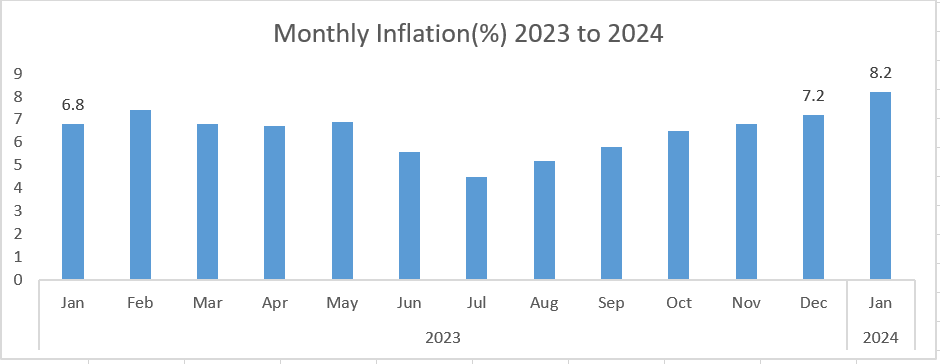Mandate:
The mandate of the Central Bank of Lesotho (CBL) as spelled out under the Central Bank of Lesotho Act 2000 is to achieve and maintain price stability. The Act also provides the following objectives and functions that impact on the Lesotho financial system, from where the Department derives its mandate:
- i) to foster the liquidity, solvency and proper functioning of a stable market-based financial system;
- ii) to formulate, adopt and execute the foreign exchange policy of Lesotho;
iii) to license or register and supervise institutions pursuant to the Financial Institutions Act 1999, the Money Lenders Act 1989, the Building Finance Institutions Act 1976, and the Insurance Act 1976;
- iv) to promote safe and sound development of the financial system; and
- v) to monitor and regulate the capital market.
The Bank Supervision and Financial Stability Department is charged with the responsibility of safeguarding the overall soundness and stability of the financial system through the deployment of micro and macro-prudential supervisory instruments. This is achieved through the regulation and supervision of banking and other non-bank financial institutions in Lesotho, which entail developing appropriate laws, regulations and guidelines that govern the players in the banking sector; continuous review of the banking sector laws, regulations and guidelines to ensure that they remain relevant to the operating environment and are aligned to the international best practices; and contributing towards initiatives that promote financial inclusion.
The Department is divided into three Divisions, namely:
- Banking Supervision Division;
- Financial Surveillance & Integrity Division; and
- Financial Stability Division.
- The Consumer Protection Unit is a shared service that serves the two Departments of Supervision.
The Department adopted a Risk Based Supervision (RBS) approach to supervision of licensed financial institutions since 2009. Under this approach, the CBL assesses the risk profile of each institution and ascertains the effectiveness of the systems and procedures to identify, measure, monitor and control risks. The approach seeks to promote competition, safety and soundness of the financial sector. It therefore, benefits institutions as regulatory efforts are more focused on high-risk areas and provides for more efficient supervision. The framework enables CBK to be more proactive and better positioned to pre-empt any serious threat to the stability of the financial system from current or emerging risks.
The Legal Instruments administered include:
- Financial Institutions Act 2012 and its implementing Regulations (about 20 regulations):
- Money Laundering and Proceeds of Crime Act, 2008 (As amended) and its implementing Regulations;
- Exchange Control Regulations 1989 and the Currency and Exchanges Manual for Authorised Dealers 2019;
Banking Supervision Division
The Banking Supervision Division is responsible for the supervision of banks in Lesotho and Large Financial Cooperatives licensed by the Central Bank of Lesotho. The Supervision function is discharged through off-site monitoring and on-site examinations. Off-site monitoring analyses financial statements, prudential and risk management reports submitted periodically to the Central Bank of Lesotho. The onsite examinations verify the accuracy and reliability of data and information submitted to CBL by the banks, including areas that cannot be readily assessed through prudential reports.
The functions of the Division include:
- To develop and implement an off-site surveillance system for banks that continuously monitors the financial health of banks;
- To prepare periodic reports on the financial soundness of and the review of compliance with laws and regulations by banks;
- To conduct examinations of banks to ensure effective regulatory and supervisory oversight of Banks;
- To verify accuracy of data submitted by banks to the CBL and provide feedback to the off-site information system;
- To prepare comprehensive reports of examination on financial condition, adequacy of risk management systems and internal controls, adequacy of Board and Senior Management oversight and Management Information Systems and extent of compliance with laws and regulations of examined banks;
- To follow-up banks’ compliance with directives and other corrective measures issued by the Commissioner;
- To recommend to the Commissioner possible course of action in handling problem banks;
- To arrange meetings with the Board, Management and Auditors of banks to discuss areas of concerns arising out of examinations and reports submitted to the CBL;
- To evaluate applications for mergers, acquisitions and change in ownership control of banks;
- To evaluate requests for branching, establishment of agencies and other extension offices of existing banks;
- To evaluate the suitability of new products and services to the domestic environment;
- Cooperate with other supervisory authorities in cases of cross border banking activities;
Financial Surveillance and Integrity Division
This Division is responsible for supervision of the Authorised Dealers in foreign exchange (ADs) to enforce compliance with Exchange Control and Anti Money Laundering and Combating of Financing of Terrorism (AML/CFT) Laws. The Division administers the delegated powers of the Minister of Finance on certain banks which have been appointed to act as ADs, which give them the right to buy and sell foreign exchange, subject to conditions and within prescribed limits. The Division also oversees compliance on Authorised Dealers in foreign exchange with limited authority (ADLAs) including Bureaux de Change, which deal in foreign exchange for the sole purpose of facilitating travel related transactions. The general objective for the Division is to create an enabling environment for trade and investment in Lesotho, by advising the Government on appropriate domestic policies to pursue, and to ensure that Lesotho does not become a safe haven for money laundering and by taking appropriate measures to combat it. The supervision function is discharged through offsite monitoring and onsite examinations, applying a risk based approach for the supervision of AML/CFT risks.
The functions of the Division include:
- To advise the Government of Lesotho through the Bank on appropriate domestic policies to implement and to ensure that an enabling environment in foreign exchange controls exists;
- To hold consultative meetings with data providers such as the Lesotho Revenue Authority (LRA), Authorized Dealers (ADs) and the exporting community, in order to ensure compliance to Exchange Control Regulations;
- To issue instructions to ADs whenever there are policy changes or adjustments;
- To process all foreign exchange applications submitted to the Central Bank, in terms of the Regulations;
- To monitor inflows and outflows of Foreign Exchange Transactions from the ADs and Authorised Dealers with Limited Authority (ADLAs) in order to ensure compliance with Exchange Control Laws;
- To compile statistics on Foreign Exchange Transactions for submission to the Research Department of the Central Bank and advice on policy direction;
- To process and analyze Exchange Control Declaration Forms F178;
- To monitor inflows of export proceeds to ensure compliance with the Regulations;
- To inspect the records of ADs and ADLAs to ensure compliance with Exchange Control Regulations and Guidelines;
- To monitor and analyse reports from banks to assess money-laundering risks;
- To conduct examinations of banks to ensure effective regulatory and supervisory oversight of Banks;
- To review AML/CFT regulations issued by the Commissioner and develop guidelines in line with international best practice such as FATF recommendations; and
- To cooperate with other supervisory authorities in cases of cross border banking activities;
Financial Stability Division
The Division’s is responsible for safeguarding the entire financial sector system stability focusing on banking and non-banking financial institutions; disseminating information to policy makers, financial institutions and the general public about the possible risks to the financial system; providing recommendations on regulations and policies that may limit risks; and coordinating and participating in the resolution of financial institutions in an efficient and effective manner.
The functions of the Division include:
- Develop and implement macro-prudential policy;
- Conduct macro-prudential surveillance including stress tests in order to identify vulnerabilities and assess resilience of the financial system;
- Participate and coordinate issues relating to crisis management and financial safety-nets at national and cross-border level, which comprise enhanced supervision, emergency liquidity assistance recovery and resolution as well as deposit insurance systems;
- Prepare and publish periodic reports (i.e. financial stability reports) on the soundness of the financial system;
- Conduct research on pertinent and emerging macro-financial and financial stability issues;
- Serve as a secretariat for the Financial Stability Committee.
Financial Consumer Protection Unit
The FCP Unit was established in 2018 with the main objective of protecting the financial consumers from unfair, deceptive or abusive practices and taking action against FSPs that violate the financial consumer laws. The FCP Unit is responsible for supervising market conduct via on-site and off-site examinations (transparency and disclosure), complaints handling and redress, developing policy and legal framework, and engaging in financial education and literacy campaigns. The Unit supervises all financial institutions under the purview of the Central Bank of Lesotho.
The Unit’s functions include:
- On-site examination and off-site monitoring of financial consumer protection and market conduct issues;
- Monitors financial consumer complaints handled by the banking industry and other financial institutions, for identification of FCP risk factors;
- Investigates and facilitates the resolution of complaints lodged to the Central Bank when internal mechanisms of banks and other financial institutions had been exhausted;
- Participate and contribute to financial inclusion initiatives; and
- Participate and contribute to financial education and literacy initiatives.



